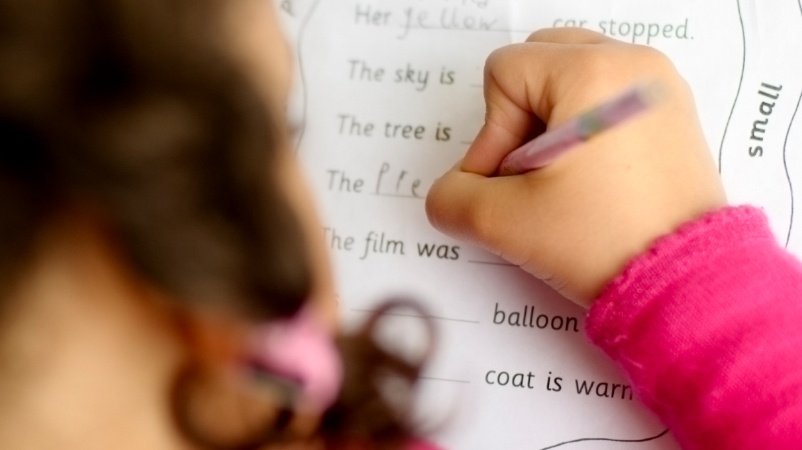
Teachers frequently offer students multiple ways to learn vocabulary: vocabulary cards, quizzes, drawing, matching activities, and even games. By varying the activities, they hope to keep students engaged with the words.
The problem with this approach is that the activities require the same level of word knowledge. Systematic instruction is based on the premise that we cannot teach every word that students will need to know, nor can we expect students to move from little or no knowledge of a word to the highest level of understanding about a word. By organizing our vocabulary activities, we can provide a more systematic approach to vocabulary instruction and help students progress from little or no knowledge about a word to being able to use the word in writing and speech.
Subscribe to the blog to get more articles like this one sent to your inbox each week.
In a previous blog, I proposed two principles for effective vocabulary instruction in the social studies classroom. That post focused on the first principle—cultivating word curiosity and consciousness as a foundation for vocabulary learning. This article focuses on the second principle: providing systematic instruction.
Systematic instruction leads students through levels of word knowledge
Researchers suggest that learners typically move through levels of word knowledge. At the lowest level, we encounter a word we have never seen before. If we’re diligent, these are the words that send us to the dictionary. In the next level, we encounter a word that looks familiar. We may be able to use context or word parts to make an informed guess about the word, but we lack the knowledge to understand the word completely. In the third level of understanding, we encounter a word that we’ve seen or heard before and we are comfortable with our understanding of the word when it’s given to us in context; however, we avoid using the word in our speaking and listening. Finally, at the highest level of understanding we not only understand the word, we can offer synonyms, antonyms, and definitions, and use it in our speaking and writing.
Systematic instruction is the intentional use of vocabulary exposure and activities to move students from the lower levels of vocabulary knowledge to higher levels of vocabulary knowledge. Students need an introduction to words before diving into multiple, deeper meanings.
My colleague, Tina Heafner, and I conceptualized systematic instruction as a framework that gave us a bigger purpose for those activities by systematizing which types of activities are used in what order. In Targeted Vocabulary Instruction, we posed five instructional routines for systematic vocabulary instruction:
1. Grouping and Sorting
Activities like word sorting or building word webs help students link words to larger concepts. For example, linking words that students may not know to larger concepts gives them a framework for learning new words. Broad understandings such as being able to sort “production” and “distribution” under the larger concept of socialism forms a critical foundation for moving towards deeper understanding.
2. Mapping and Visualizing
This routine includes activities that help students create a visual representation or link with the words. For example, “genocide” becomes much more memorable when linked with a visual image. Place the word and an image in the countries where it has taken place within the last century and students begin to deepen their associations with the word.
3. Comparing and Contrasting
As we teach vocabulary, we want to think about ways to teach more than one word at a time. We also need to teach definitional nuances that show shades of meaning. For example, how would you arrange the following from words that connote freedom to words that show the lack of it: serf, slave, tenant, prisoner, debtor, owner, lender, master, nobility, emperor? Rather than a single, correct response, the goal is to help students think about what words mean and what they do not as they begin to pick up the subtleties of words in and out of contexts.

4. Defining and Associating
Certainly there are times to teach very specific definitions. For many students and within specific contexts, “plutocracy” will require a firm definition. The five instructional routines aren’t meant to avoid those instances when a specific definition is needed. At the same time, we want to help students build generative strategies for word learning. That is, we want them to recognize that while they might not know what plutocracy means, there is a pattern (-cracy) that is common to many other words (e.g. democracy, aristocracy). Associating words with common patterns will help students generate their own understanding of words.
5. Reviewing and Playing
In the constraints of classroom time, we often overlook this vital component of vocabulary. If students need multiple exposures to a word (perhaps as many as 12 exposures to a word, according to some estimates), then we need to offer them opportunities to make those words part of their lexicon.
Social studies is a discipline of numerous words and concepts. Vocabulary instruction has been a cornerstone of social studies for a century or more. Offering systematic instruction provides an intentional frame for moving students from no knowledge of a word to higher levels of understanding about words, and to generate their own knowledge of words.
References
Targeted Vocabulary Instruction, Tina Heafner & Dixie Massey. Social Studies School Services, Culver City, CA.
Subscribe to the blog to get more articles like this sent to your inbox each week!
Dr. Dixie Massey is the program coordinator of the reading endorsement at the University of Washington, where she also teaches courses in the Department of Language, Literacy, and Culture. She has published in such journals as Social Studies and the Young Learner, The Reading Teacher, and The Journal of Adolescent and Adult Literacy. She is co-author of the curriculum series, Comprehension Strategies for World History and U.S. History in the Social Studies; Targeted Vocabulary Instruction, and the Seeds of Inquiry series published by Social Studies School Service.
